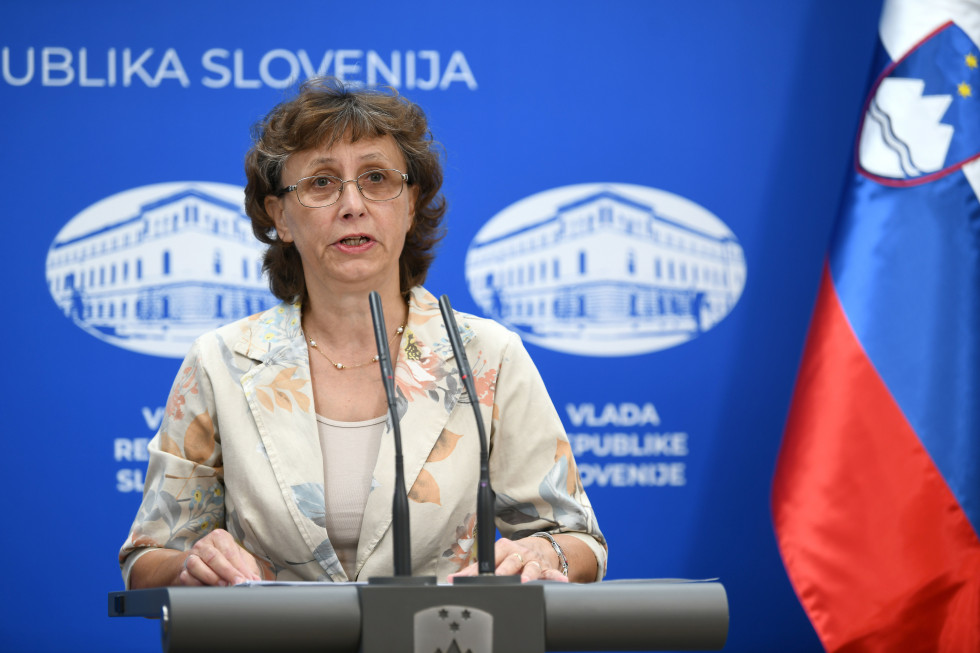The number of people who become ill after being put in quarantine is increasing
Mr Kacin called on pupils and students, as well as their parents, to monitor their health and the health of their children as closely as possible, and to be attentive and responsive to any signs of infection. If an infection is suspected, they should immediately inform their doctor and teachers, as well as the head teacher, so that he or she can adjust the work at the school as soon as possible in the event of possible infections. Only by acting responsibly will each of us be able to prevent the introduction and spread of infections inside and outside classroom desks, Mr Kacin is convinced, noting that the health inspection is currently prioritizing the implementation of quarantine decisions, especially for younger citizens.
Mr Kacin reiterated that this afternoon in Brdo pri Kranju, the Government of the Republic of Slovenia would also get acquainted with the current epidemiological situation and continue the discussion on the preparations of the institutions for the expected epidemic wave of COVID-19 in autumn.
Ms Nuška Čakš Jager, an epidemiologist from the National Institute of Public Health (NIJZ), presented the current epidemiologic picture in the world and Slovenia, including the situation in neighbouring countries.
The number is overgrowing in the world – we have exceeded 23 million infected. Both Americas have a high percentage of infected people, and a massive increase is also observed in Asia. Europe is also on the rise. The European Centre for Disease Prevention and Control states that the largest proportion of those infected in Europe comes from Russia, Spain, Italy and the United Kingdom.
Yesterday, as many as 1,439 tests were performed in Slovenia. This number ranks us among the top European countries in terms of the number of tests. Thirty-six new cases were confirmed. Two persons were ill who were pre-ordered to go into quarantine upon entering the country. According to the data known so far, only seven cases of newly infected persons were related to imports from abroad.
Today, as many as a third of all infections have been confirmed in individuals who have previously been quarantined. According to Mr Kacin, this limits the possibility of spread in good time, which is also the primary purpose of quarantine and shows that the decision of the Government to introduce quarantine for all returning from epidemiologically dangerous countries was an effective measure to limit the spread of infections in Slovenia.
In Slovenia, we have so far confirmed 2,722 cases and performed 153,502 tests. According to Ms Čakš Jager, the 14-day cumulative incidence per 100,000 inhabitants is worrying – in Slovenia, it already amounts to 20.14.
Yesterday, we recorded another infection of a resident in a nursing home. In the summer, we also recorded more infected in the age group of 15 to 35 years.
A large percentage of cases is entered from abroad and represents infections associated with these cases. Croatia leads (179), followed by Bosnia and Herzegovina (45), Serbia (30) and Kosovo (19). From 1 June to 23 August, 323 cases were entered from abroad.
According to the epidemiologist, a large proportion present those who become ill after being put into quarantine. Initially, about three per cent of those put in quarantine became ill. Now, this number rose to almost ten per cent. Ms Čakš Jager emphasized that quarantine is the measure that allows us to control the spread of the disease.
She again explained the difference between isolation and quarantine.
Isolation means isolating an ill person or a person in whom we have confirmed an infection, but that person does not necessarily have symptoms. Such a person goes into isolation and is cared for by the attending physician. All those in whom the infection has been confirmed are cared for by the attending physician. He or she will judge how long such a person must remain on sick leave.
Quarantine is a measure we already know from documents originating from the 7th or 9th century BC. Quarantine is a crucial public health measure in the situations we are in now. Quarantine is the isolation of a healthy person who has been in close and risky contact with a person who is ill or infected. Therefore, during incubation, this person is kept in quarantine to contain any further spread of infection that may occur within this period.
Quarantine is provided for in the Communicable Diseases Act. There is no appeal against the imposition of quarantine; the Minister of Health orders it on the proposal of an epidemiologist or the NIJZ.


